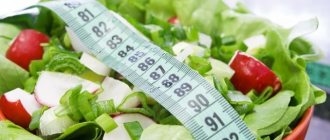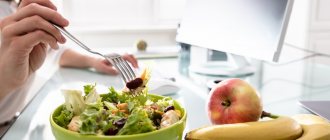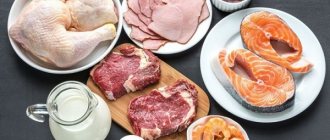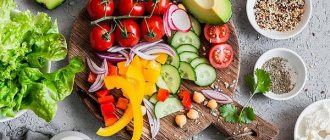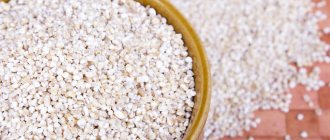Celiac disease is a common disease with a hereditary predisposition that affects the small intestine when eating foods containing gluten.
Gluten (gluten) is a special type of water-insoluble proteins contained in cereal grains and intended for germination and nutrition of plant embryos. In cooking, gluten gives elasticity to dough and fluffiness to baked goods. Most gluten is found in modern wheat and its more ancient types (spelt, spelled and kamut), as well as in barley and rye. Oats do not contain gluten, but oat groats often contain wheat, so if you have celiac disease, oat products should only be used if they are labeled gluten-free.
Learn more about celiac disease:
- What is celiac disease and how is it treated?
- Why is celiac disease dangerous in adults?
Celiac disease affects not only children, but also adults; the disease can manifest itself in a variety of symptoms and occur in a hidden atypical form.
Main signs of celiac disease
- Abdominal pain, flatulence, bloating, nausea.
- Loose, unformed stools, diarrhea or constipation.
- Weight loss, excessive thinness, difficulty gaining weight and muscle mass.
- You may also be overweight.
- Muscle weakness, loss of strength, headaches, joint pain, osteoporosis.
- Rash, dermatitis, psoriasis, dry skin, brittle nails, hair loss.
- Menstrual irregularities, miscarriage, male and female infertility, decreased potency and libido, hormonal disorders.
- Anemia, vitamin deficiency.
Due to the variety of symptoms, diagnosing celiac disease and gluten intolerance in adults is a complex multi-step process; the diagnosis is established by a doctor based on the totality of the results of all examinations.
The main treatment for celiac disease is strict adherence to a gluten-free diet. In addition to diet, especially at the initial stage of treatment, patients with celiac disease need additional drug therapy. It is important that the therapeutic effect of following the diet occurs within 3-6 months, but noticeable improvements can already begin in the first weeks.
Diagnosis of celiac disease in more detail:
- Blood tests to detect celiac disease
- FGDS (video gastroscopy) for diagnosing celiac disease
Attention!!! Do not eliminate gluten-containing foods before consulting a doctor, since eliminating gluten, despite temporary improvement, may subsequently cause an exacerbation and distort the results of the examination to make a diagnosis.
Diet and lifestyle for people with celiac disease
If you have completed all the necessary examinations and have been diagnosed with celiac disease, I suggest using the following tips.
The transition to a gluten-free diet is an important stage in a person’s life with the formation of a new lifestyle and eating habits. This is a complex process, however, all difficulties are compensated by improving well-being and getting rid of problems that have been bothering you for years, as well as reducing the risk of cancer of the gastrointestinal tract (especially if relatives had a similar problem). For support in adapting to a new lifestyle and diet, you can contact the Expert Center.
Difficulties in following a gluten-free diet include:
- with accidental ingestion of gluten into food;
- the presence of hidden gluten in products due to violations of their labeling rules;
- contamination of cereals, flour and other products with traces of gluten;
- difficulties in finding gluten-free products;
- lack of support and understanding from other people.
According to European Union regulations, products are considered gluten-free
It is impossible to violate the gluten-free diet, since scientific research has confirmed that consuming more than 50 mg of gluten per day (500 g of food containing more than 20 ppm gluten) for three months or receiving a large amount of gluten at one time leads to intestinal damage and the return of disturbing symptoms. symptoms.
Barley diet for weight loss: benefits, pros and cons
Barley is rich in carbohydrates and proteins, which quickly satisfies hunger and dulls appetite.
A strict (hard) barley porridge diet, or its milder variations, helps to get rid of not only excess weight, but also some health problems.
The benefit of the cell method diet lies in its unique components:
- Fiber frees the body from waste and toxins, improves intestinal function;
- Vitamins and minerals improve skin condition, slow down aging and treat acne;
- Antioxidants remove all free radicals and also have a beneficial effect on the skin, like vitamins.
Benefits of the barley diet for weight loss:
- Suitable for diabetics;
- Quickly satisfies hunger;
- It is quite filling.
It is contraindicated to use this technique during pregnancy and breastfeeding, as well as for those who have stomach problems.
The most popular diet is barley porridge with fruit: it completely satisfies the need for sweets, but you can eat any fruit, with the exception of grapes.
How to properly prepare barley porridge for a diet:
- The first option is steaming: pour 1 cup of egg into a container, pour boiling water (2 cups). Close the lid and leave overnight;
- The second option is cooking: boil 3 cups of water, then add cereal (1 cup) to the pan. Cook until thickened.
How much can you lose?
100 g of porridge boiled in water contains only 76 Kcal - this is a very low indicator that is favorable for weight loss. Thus, by adhering to a strict diet, you can lose up to 8 kilograms in a week, and 5-6 kg on a softer one.
To contents
How to create a gluten-free menu
Based on gluten content, we can divide all foods and drinks into 4 categories :
Products that are definitely gluten-free
Products from this category can be safely eaten without restrictions.
Fresh meat and poultry
All dishes prepared from beef, lean pork, lamb, chicken, turkey without additives or sauces containing gluten.
Fresh fish and seafood, eggs
All dishes prepared without additives or sauces containing gluten.
Mushrooms
All dishes prepared without additives or sauces containing gluten.
Vegetables and fruits
Fresh and prepared without additives or sauces containing gluten.
Vegetable and animal oils
Butter, sunflower, olive, corn, etc.
Flour, starch, pasta, dumplings, baked goods, desserts and sweets
From rice, corn, quinoa, amaranth, labeled gluten-free (with a picture of an ear crossed out and a number) from Russian and foreign manufacturers specializing in the production of such products. The range of gluten-free products can be found on the websites of special stores. Pay attention to the packaging of the product; the product you need must be marked with the symbol of a crossed out ear with a number underneath it!
Foods and drinks that definitely contain gluten
To treat celiac disease, these foods and drinks must be excluded!!!
Flour, starch, bread, pastries, pasta, muesli, dumplings, sweets, crackers made from wheat, rye, barley, oats, spelt, kamut spelled, triticale, durum.
Cereals, baby porridges: pearl barley, barley, wheat, semolina, wheat, couscous, bulgur, freekeh, rolled oats.
Candies, chocolate with wafer crumbs.
Sauces: soy sauce and others.
Drinks kvass , jelly , alcoholic drinks (beer, vodka, whiskey).
Food additives : caramel colors E-150a – E-150d (confectionery, coca-cola, bread, pastries, dairy products), maltol E-636 (chocolate, essences, soft drinks, canned fruit and vegetables, baked goods, tea, coffee, cocoa), isomaltol E-953 – sweetener (dairy, fruit, egg-fat and grain desserts, fruit ice, ice cream, jelly candies, marmalade, jam, glazed fruits), maltitol and maltitol syrup E-965 (sweets without sugars, medicines), mono- and diglycerides of fatty acids E471 (confectionery and dairy products, margarine)
Products that may contain gluten and products with hidden gluten (gluten content not stated on the label)
Dairy products without sugar and fillers : kefir, fermented baked milk, cottage cheese, sour cream, natural yogurt without additives, soft and hard cheese.
Recommendations: These dairy products can be tested with an iodine test (if iodine is dropped onto a sample of the product and the iodine changes color, it means the product contains flour or starch and should not be eaten). Also read the ingredients carefully.
Sweet dairy products : curd mass, yoghurts with filling, ice cream, curd cheeses.
Recommendations: exclude or follow the algorithm below.
Chips, cereals, crackers : corn, rice flakes and crackers, chips, French fries.
Recommendations: exclude or follow the algorithm below.
Ready-made meat and fish semi-finished products in any form : semi-finished products from minced meat and fish, semi-finished products in breading, sauces.
Recommendations: exclude, except for self-prepared ones.
Sausages : ham, boiled sausages, sausages, pates.
Recommendations: exclude or follow the algorithm below.
Canned food : canned meat, canned fish, canned vegetables and legumes, industrial jam.
Recommendations: exclude.
Imitation seafood : “crab sticks”, “crab meat”
Recommendations: exclude.
Sauces : tomato paste, ketchup, mustard, salad dressing, vinegar, mayonnaise. Recommendations: exclude or act according to the algorithm given below the table
Seasonings: ground single-component and multi-component dry seasonings and spices.
Recommendations: exclude.
Sweets : chocolate bars, caramel, chocolate and soy candies with filling, oriental sweets, marshmallows, marshmallows.
Recommendations: exclude or act according to the algorithm given below the table
Drinks : juices with pulp, instant coffee, cocoa, tea, hot chocolate.
Recommendations: exclude.
Algorithm for using products of the third category:
- Find a similar product labeled gluten-free.
- If you cannot find a gluten-free analogue, study the composition on the packaging, check the composition of the product and the presence of gluten with the manufacturer. If you are not sure, then it is better to exclude the product.
- Look for the product you need in gluten-free stores, where you can buy products from this section that are more likely to contain gluten. Store employees conduct periodic spot checks of unlabeled products and check the composition with the manufacturer.
- You can check the composition of the product in communities with celiac disease, where you can find information on manufacturers and products from this category that do not contain gluten. Be sure to read the composition on the packaging of products from the list found before each use; sometimes the manufacturer changes the composition or manufacturing conditions and traces of gluten appear in previously approved products.
Products manufactured in the EU undergo more stringent controls, so the composition indicated on the packaging of such products can be trusted more. In Russia, the situation has improved recently, but there are still many products with unspecified content of wheat flour and starch and their derivatives.
Caution should be exercised when choosing medicines ; carefully read the composition of the medicines before purchasing. Tablets with and without coating, dragees, powders, granules may contain wheat flour and starch as a formative component, which, with prolonged use or persistent inflammation in the intestines in the early stages of therapy, can cause undesirable consequences. Tell your doctors that you have celiac disease before writing a prescription .
In addition, gluten can be found in toothpaste and lipstick .
Attention!!! In all cases, using products from this section, other than those that are labeled gluten-free or that can be tested with iodine, you are at risk of violating your diet.
Products with traces of gluten
These products do not contain gluten-containing ingredients, but may be produced on the same production line as gluten-containing products. Typically, manufacturers indicate such information on the label, but they may not; in addition, not all factories for the production and packaging of products have a high degree of purification of raw materials from impurities.
Allowed cereals : rice, millet, quinoa, buckwheat.
Recommendations: rinse all cereals several times in running water before cooking, and pre-sort buckwheat and rice, as they may contain single grains of wheat. Buckwheat should contain a minimum of broken grains and dust. Also, to improve the quality, the cereal can be poured with cold water, brought to a boil and drained, then add new water and cook.
Legumes : peas, beans and other legumes.
Recommendations: rinse several times before cooking in running water, carefully read the instructions on the packaging; recently, manufacturers have been required to indicate whether legumes contain traces of gluten.
Cereals for making porridge : rice, millet, buckwheat
Recommendations: exclude.
Flour : from corn, rice, legumes, nuts, flax without special marking
Recommendations: exclude.
Seeds and nuts, dried fruits : peeled seeds, any nuts and dried fruits
Recommendations: exclude seeds and dried fruits, rinse nuts several times before eating
Frozen vegetables : any prepared frozen vegetables
Recommendations: exclude.
Sweets : chocolate, candies.
Recommendations: exclude.
Over time, it is worth choosing a manufacturer of approved cereals, whose raw materials, in your experience, have fewer impurities.
All products with traces of gluten, except for permitted cereals, legumes and nuts, are not recommended. Only flour that is specifically labeled gluten-free or that is sold in specialty gluten-free stores can be used.
Barley porridge diet for quick weight loss: menu, food rules, recipes
The rules for losing weight are simple:
- For optimal weight loss, it is recommended to eat fermented milk products, protein foods, vegetables, fruits and porridge, but you will have to give up alcohol, flour, sugar, potatoes, sweets, smoked meats and fried foods;
- During each day, you need to drink 1.5 liters of clean water, and also, if possible, devote time to physical exercise.
Barley diet for 1 day
The essence of this method is to periodically conduct fasting days according to the following scheme:
- From morning to evening we eat only barley grits, steamed with boiling water (up to 600 g);
- In order to kill hunger, we drink water.
Menu for 3 days
This option differs from the previous one in a softer diet, but it can still be difficult to tolerate. In 3 days, the weight becomes 3-4 kilograms less if you adhere to the following menu:
- We have breakfast with a portion of eggs and a glass of kefir;
- For a snack - fruit;
- We also have porridge for lunch;
- For an afternoon snack we drink kefir;
- For dinner - the same as for lunch.
Menu for 7 days
In a week of a fairly limited diet of vegetables, fruits, boiled eggs and fermented milk products, you can lose up to 7 kilograms.
Approximate menu:
- We have 150 g of porridge for breakfast, eat a banana;
- For lunch we eat cabbage soup without meat, porridge and vegetable salad;
- For an afternoon snack we eat any citrus or apple;
- We have dinner with egg and a glass of kefir.
Barley diet for 5 days
For easy figure correction, you can use this approximate menu, which allows you to lose up to 5 kilograms:
- For breakfast we eat an apple and porridge. Wash it down with green tea;
- We have lunch with vegetable soup without potatoes, eat porridge (100 g);
- For an afternoon snack we eat any fruit;
- We have dinner with yogurt and boiled egg.
On barley porridge and vegetables
This weight loss option can be used for a week, and in addition to standard vegetables, the menu should include mushrooms, but meat is prohibited. In 7 days you have a chance to lose 6-7 kilograms.
Indicative menu:
- In the morning we eat low-fat yogurt and porridge;
- Snack on fresh vegetables;
- For lunch we eat mushroom soup and vegetable salad;
- We have an egg dinner.
On egg and bran
Bran is useful for unstable intestinal function, so it is also useful to include it in the diet. This diet is not particularly strict, because... Here you can eat everything except foods prohibited by the rules. Over the course of a week, the total weight decreases by 3-4 kilograms.
Approximate menu:
- Before breakfast, eat a spoonful of bran;
- We have breakfast with porridge, fruit and yogurt;
- After a couple of hours, we snack on a salad;
- For lunch we prepare a vegetable stew, soup or salad, before eating we eat 1 tbsp. l. bran;
- For an afternoon snack we drink kefir or juice, eat a banana;
- We always have porridge for dinner.
Barley porridge diet for skin
To rejuvenate and improve the condition of the skin for two weeks, it is recommended to adhere to the following approximate menu:
- For breakfast we eat grapefruit and porridge;
- We have lunch with a salad of white cabbage and carrots, dressed with olive oil. We eat boiled egg;
- For an afternoon snack – an apple or orange;
- For dinner we drink a glass of kefir and eat barley porridge.
We also recommend that you read the article Millet Diet.
To contents
Manufacturers of gluten-free products
Recently, the range of gluten-free products in Russia has expanded significantly, but not all Russian manufacturers have been certified for compliance with gluten content standards, which is being implemented by the Emilia Society of Celiac Disease Patients.
Russian manufacturers:
- Garnets
- Dietetics
- Diet product
- McMaster
- First Baby Food Plant
- Di & Di
- Korner and others.
Foreign manufacturers:
- Almondy (frozen cakes)
- Balviten
- Gluten-free
- Shar
- G-FREE.CLUB
- Gullon
- Le Veneziane
- Mevalia
- NUTRI FREE
- Provena
- Sotelli et al.
Disadvantages of the barley diet
There are not so many disadvantages of the cell, but you also need to know about them. For example, the nucleoli contain starch, so you cannot eat porridge often or a lot, otherwise there is a risk of gaining weight. With a normal diet, you can put barley porridge on your table a couple of times a week, but not more often.
Contraindications
It should not be used by people with glycine enteropathy. It is also not recommended during pregnancy, as it contains many substances, the excessive use of which can lead to a risk of premature birth. When you consume barley porridge, omit the egg white.
Of course, before you start systematically consuming cereals, we strongly recommend that you seek advice from a nutritionist, since only he will be able to determine the optimal portion of this product.
How to cook and store food
If you prepare gluten-free and gluten-free dishes at home, we recommend that you adhere to the following safety rules:
- Store all gluten-free foods separately.
- Wash utensils thoroughly after preparing food containing gluten.
- Do not cut gluten-free or gluten-free foods with the same knife; the same goes for using other kitchen utensils. It's best to have separate cutting boards for gluten-free foods.
- If you have handled regular bread or other baked goods containing gluten, you should wash your hands before eating.
- To prevent dust from wheat flour from getting into gluten-free baked goods, it is better to cook them separately or before baking with wheat flour.
- You should not use the same butter on both gluten and gluten-free breads, as crumbs may get in there.
To prepare dishes, you can use special gluten-free recipes or adapt regular ones. Semolina and crackers can be replaced with rice flour or rice grains; rice flour is best suited for coating. More delicious baked goods are obtained from special non-ferrous mixtures; you can buy ready-made ones or make them yourself.
The products can be found in specialty stores and large chain stores have small sections of gluten-free products.
Barley groats: composition and benefits
If we talk about the main components, then most of this product consists of carbohydrates, which are only slowly digested. 10% are proteins and 6% fiber. Only 1.3 g belongs to fats. Mineral substances are quite widely represented in porridge. For example, 100 g of it contains almost the daily requirement of iron - 12 mg. There are other components that contribute to the stable and normal functioning of the body. This is phosphorus - 354 mg, potassium - 478 mg, calcium - 94 mg. Substances such as iodine, bromine, cobalt, silicon and others contained in the porridge add impressiveness to the mineral range. Barley porridge is rich in vitamins. These are vitamin A and D. Some representatives of group B. And also E and PP.
Diet failure. What to do?
Anyone can fall off a gluten-free diet, so don't panic and get back on a strict diet (gluten-free foods in the first category) as soon as possible!
Typically, a breakdown can occur for a variety of reasons, which include:
- eating habits that have been formed over the years and the associated difficulties of transitioning to a new diet;
- psychological difficulties in the initial stages after diagnosis;
- misunderstanding and provocations from others;
- Unfair labeling of products by the manufacturer.
Going on a visit, going on a picnic or on vacation (provoking smells of prohibited foods and feast situations) can especially affect adherence to a gluten-free diet.
With a sudden transition from a gluten-free diet to a normal diet, patients with celiac disease also sharply resume and even intensify the complaints that preceded the gluten-free diet. If the patient continues to consume foods with gluten, progressive damage to the small intestinal mucosa and subsequent malabsorption in the intestine develops, which leads to the development of anemia, osteoporosis, hypovitaminosis, and hormonal disorders. In addition, the risk of gastrointestinal cancer increases.
If you find yourself in such circumstances and are faced with a deterioration in your health, the gastroenterologist-nutritionist at the Expert Center will provide you with all the necessary support and help you cope with the renewed symptoms of the disease .
How to eat out?
Nowadays, the emergence of gluten-free cafes and restaurants has made it easier than ever to dine out for lunch or dinner. If you are unable to find gluten-free food nearby when ordering dishes, check with the waiter or cook whether the dish you have chosen contains wheat flour or starch. What is better to choose: vegetable salads without sauce, vinaigrette, vegetable soup, broth, natural meat or fish without additives or sauces, rice, natural potatoes. The simpler the dish you choose, the less likely it is to contain gluten.
When visiting, use the same principles, do not hesitate to ask the hosts in advance about the menu and ingredients, and bring used bread or other baked goods with you.
Gluten-free cafes and restaurants (including those with gluten-free labeled dishes)
- “Pound of Raisins” (cafe with completely gluten-free cuisine) There are dumplings, pancakes, dumplings, and a wide range of baked goods.
- “Benois Farm” (so far the only restaurant in the city with certified gluten-free cuisine) Prices are above average, there is a shop where you can buy used bread and dumplings.
- Territory of Gluten-Free Kitchen, production and delivery of gluten-free dishes to order.
Please note that it is necessary to check with the waiter and cook the composition of the dishes and the method of their preparation in any case , even if the dishes are labeled gluten-free. Sometimes restaurateurs put this badge only because the prepared dish does not explicitly contain products made from wheat, rye, barley or other grains, but the products have not been tested for gluten content.
Be careful !!! Eating out always puts you at risk of breaking your gluten-free diet.
Contraindications
Contraindications to eating barley dishes:
- diseases of the stomach and intestines in acute stages;
- gluten enteropathy (the body does not accept grains);
- individual intolerance to the component composition.
People with gluten intolerance should be careful when using barley porridge.
If symptoms persist or have not completely disappeared
Carefully check the composition of the products you use; perhaps some of them contain hidden gluten, and try to follow a more strict diet.
If you follow a strict diet for six months, and there is no improvement, you need to contact a gastroenterologist-nutritionist at the Expert GC to clarify the diagnosis and decide whether to prescribe additional treatment. At your appointment, your doctor will assess with you the dynamics of the disturbing symptoms and their changes before and after the use of a gluten-free diet.
Reviews and results of losing weight
Alena Ivanova, 32 years old, Chita: “The barley diet was a revelation for me. Before this, I had not prepared yachka products and had not tried them from friends. The cereal is good, satisfying and has a pleasant taste. I didn't feel hungry the entire week of the diet. I managed to get rid of 3.8 kg without doing any physical activity.”
Sergey Anatolyevich, 54 years old, Astrakhan: “I’m not a fan of cereals, but the nutritionist insisted that a diet is simply necessary for me now. I used simplified recipes. Together with the cell, I ate salads, fruits, and drank a lot of water. On day 7 of the diet I managed to lose 6 kg. The doctor recommended repeating the course in a month, and during these 30 days, every 3-4 days, prepare low-calorie barley dishes for breakfast.”
Alisa Vasilyeva, 28 years old, Nizhnevartovsk: “I use barley fasting days every week and after every holiday. Good pronounced effect. Swelling goes away, weight decreases, intestinal function normalizes.”
Veronika Sevastyanova, 33 years old, Samara: “I cook barley dishes not only with water, but also with milk. However, I still notice weight loss. I exclude meat products, sweets and bread from my diet. Sometimes I add honey or fruit to the jar for taste. Cereals are good for the whole body. I go on a diet once a month. Six months later, the hair became thicker and shinier, the gastrointestinal tract function normalized, rashes on the face and body disappeared, and health improved.”
Personal stories of patients of GC "Expert"
A 52-year-old patient complains of weakness, abdominal pain, bloating, frequent bowel movements, low levels of magnesium and calcium in the blood, difficulty gaining weight with proper nutrition, pain in the legs, her son was previously diagnosed with celiac disease.
I have been following a gluten-free diet for 9 years, at first it was very difficult to get used to, but during the first year I managed to adapt to cooking delicious familiar dishes without gluten. To make our diet easier, my husband and I stopped using wheat flour at home. Gluten-free flour makes very tasty cakes and pizza, all guests eat them with pleasure. My diet is dominated by natural products, with the exception of processed foods, sausages, ice cream and other products that may contain gluten.
Improvements did not begin immediately, especially since at the beginning of the diet there were mistakes associated with eating outside the home. The support and advice of a gastroenterologist-nutritionist at the Expert Center helped me learn to avoid mistakes and follow a proper diet. On the diet, the abdominal pain, bloating and weakness went away, my health and mood improved, the pain in my legs stopped bothering me, I began to look better, having gained the missing kilograms.
I buy gluten-free products in specialized stores, mainly flour, bread, sweets, and pasta. Sometimes we buy ready-made gluten-free bread at the Benoit Farm restaurant. Now in St. Petersburg there is quite a wide range of gluten-free products, so the most difficult thing is eating out. If I need to eat in the city, I prefer the “Na Pairs” and “Pound of Raisins” cafes.
Useful properties of porridge
- Thanks to the composition of barley grains, from which barley porridge is produced, it is considered one of the healthiest among other representatives of this product range.
- Porridge copes well with diseases of the stomach and intestines. Dietary fiber, of which there is quite a lot, helps the absorption of all useful substances, almost completely. In addition, toxins and other harmful substances are removed. The body is also cleansed of toxins.
- Experts classify barley porridge as a dietary food. These properties help those who wish to lose excess weight. They also help to recover after severe operations associated with gastrointestinal diseases.
- Barley porridge also has a positive effect on blood sugar levels. Therefore, it is indicated for diabetes mellitus. It also normalizes the endocrine system.
- Some studies have shown that barley porridge for weight loss can prevent the development of allergic diseases. It also normalizes cholesterol levels, which is important for patients with cardiovascular diseases.
- This product also alleviates the condition of arthritis patients. It is worth introducing barley porridge into your diet if you have kidney or liver diseases. After all, this porridge has a diuretic and anti-inflammatory effect.
- Another quality that makes barley porridge very useful is the ability of its components to cope with bad mood and even depression.
- Containing a fairly large amount of amino acids, such as lysine, helps collagen production. He, in turn, takes care of the youth of your skin, smoothing out wrinkles and preventing their appearance. Thanks to simple barley porridge, you can maintain a slim figure and a beautiful appearance.
Read also: Healthy eating for weight loss: menu for the week
The role of barley porridge in weight loss
The calorie content of egg is 320 kcal per 100 g. However, the main secret is that it contains a lot of dietary fiber and complex carbohydrates, i.e. it saturates the body well with energy and removes bad substances from it, incl. cholesterol. Its diuretic properties also promote weight loss by eliminating excess fluid.
Plus, eggs normalize metabolic processes in the body, and the coordinated functioning of the digestive organs is the key to successful weight loss.
Porridge also has a positive effect on your mood - no depression will overtake you during the barley diet.
Recommendations for dynamic monitoring of patients in the Expert Center
- After diagnosis, a follow-up visit with a consultation with a gastroenterologist-nutritionist once a year or if your health worsens. Scientific studies have found that patients under medical supervision follow a gluten-free diet more successfully.
- FGDS with biopsy once a year for the first 3 years, then once every 2-3 years.
- Ultrasound of the abdominal organs once a year.
- Blood and stool tests once a year.
- Feedback with a doctor: the opportunity to ask questions to a specialist by email or phone throughout the year.
